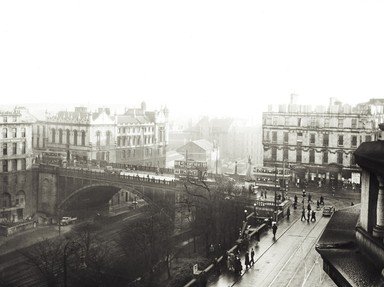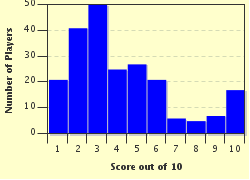Quiz Answer Key and Fun Facts
1. Admiral William "Bull" Halsey was commander of South Pacific Area by mid October, 1942. Whom did he replace?
2. On December 16, 1944 the Ardennes Mountains erupted. Of the three German Armies involved in the offensive, the 6th SS Panzer Army was assigned which mission?
3. The decision to take Bougainville was made as a subtitute for taking which Japanese held stronghold?
4. In the Soviet Union units that performed extraordinarily well were permanently redesignated with what special honor?
5. Two British aircraft carriers, the HMS Courageous and HMS Glorious, were the first two carriers sunk during WWII. This should not be considered a particularly dubious honor as the British had a large fleet of carriers. What other curiosity binds these two ships?
6. Which was the first aircraft carrier sunk in the Pacific theatre?
7. Of the following top aces (five or more kills) for each respective country, which one did not survive the war?
8. There were several Allied conferences during the war to plot strategy. After one of these conferences Albert C. Wedemeyer - US chief plotter George C. Marshall's top adviser - said the following; "We came, we listened, and we were conquered." To whom was Wedemeyer referring?
9. The Ferdinand was a huge German tracked tank destroyer. It weighed 65 tons, had up to 200mm armor protection, and its 88mmL71 gun could destroy Stalin's dacha in Moscow with one shot, to say nothing of any armored vehicle in existence. In what famous battle was this monster first used?
10. The US First Infantry Division is the oldest division in the United States. During WWII the "Big Red One" was known for its fighting spirit. "It was a fighting division", as one of its troops saw it. Who was its commander during the invasion of Normandy?
Source: Author
Joe_Meek
This quiz was reviewed by FunTrivia editor
bloomsby before going online.
Any errors found in FunTrivia content are routinely corrected through our feedback system.

